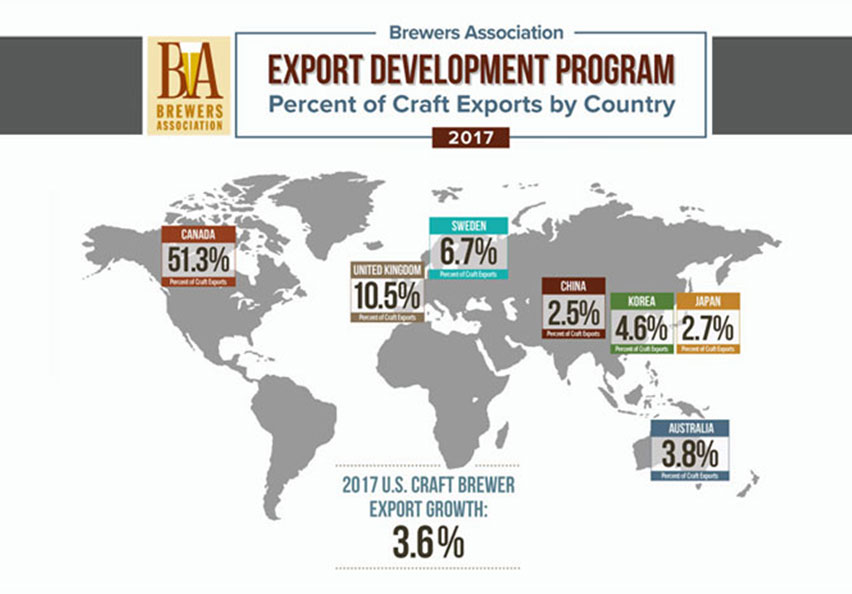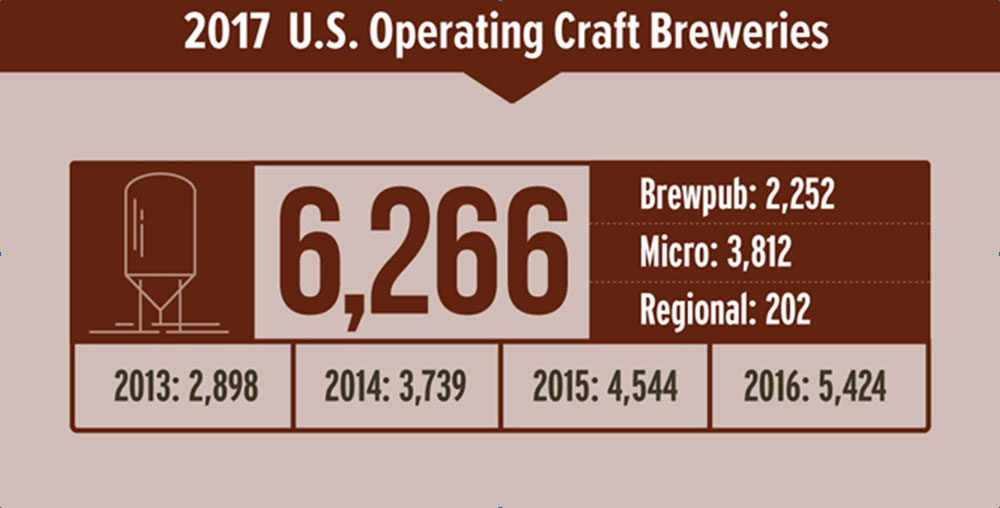It is becoming clearer why AB-InBev on 1 January 2018 replaced its North American chief Joao Castro Neves by another Brazilian company veteran, Michel Doukeris: Mr Neves, who was widely seen as a potential successor to CEO Carlos Brito, not only failed to stem the decline of the brewer’s major brands Bud and Budweiser, he was also held responsible for Goose Island’s bruising 2017.
The man who invented Blue Moon for Coors in 1995 believes he has the magic touch to bring out yet another game-changing beverage. Keith Villa, 55, who retired from Molson Coors in January 2018 after working at the firm for 32 years, plans to market a cannabis-infused non-alcoholic craft beer.
The Brewers Association (BA) reported on 3 April 2018 that exports of US craft beer rose 3.6 percent to 482,309 barrels (564,000 hl) in 2017. The organisation valued those products sold abroad at USD 125.4 million. While this is a record high, it is now the third consecutive year that growth has slowed.
The financially troubled Green Flash brewery has been sold to a group of investors following a foreclosure by the company’s principal lender, Comerica Bank, media reported on 2 April 2018. The announcement of the sale comes just a week after Green Flash closed its Virginia Beach brewery 16 months after opening the East Coast operation.
A record number of breweries opened their doors last year, according to a new report from the Brewers Association (BA) published in March 2018. It estimates that 997 breweries opened in 2017, bringing the total number of US breweries to 6,372.
Shocking news. A combination of too much debt and stalled growth has forced San Diego’s Green Flash Brewing to cease operations at its 100,000 barrel East Coast brewery in Virginia Beach, with the loss of 43 jobs in the process.
Advertising people are supposed to know how to communicate. So how come they still appear tone-deaf to blatant forms of racism? Heineken is a case in point. Their probably melanin-free marketing department thought nothing about it when in a recent commercial they decided to visualise the difference between a full-strength and a light beer by drawing an analogy to black people’s skin colour.
It seems that things move very slowly in Argentina. Almost two and a half years after the AB-InBev/SABMiller deal, Argentina’s production ministry said on 14 March 2018 it had approved a proposal from AB-InBev to divest seven of its brands in the country as a condition for its takeover of SABMiller.
Molson Coors, headquartered in Denver and Montreal, became the latest publicly traded company to mention the growing legal marijuana industry in its annual financial report. The latest filing with the US Securities and Exchange Commission indicates that the brewer is closely monitoring the impact of legal cannabis sales on its customers’ pocket money and, eventually, on sales for its beer.
Within hours of President Trump announcing a plan to put a ten percent tariff on imported aluminium, the Big Brewers in the US through their lobby group, the Beer Institute, responded, saying that the tariff could cost the beer industry 20,000 jobs.




